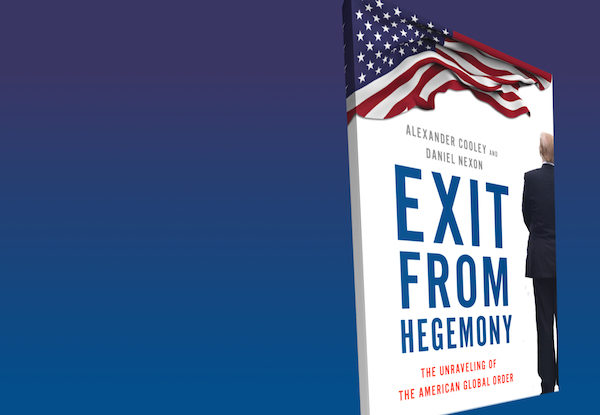
While debates over Trumpism currently consume foreign-policy watchers, scholars of world politics generally focus on longer-term developments. After the collapse of the Soviet Union in 1991, the United States faced no great-power peer competitors. It enjoyed uncontested status as the world’s wealthiest country. The next seven largest economies all belonged to advanced industrialized democracies allied with the United States. American officials believed that the Russian Federation would become an important strategic partner. The American foreign-policy establishment convinced itself that integrating China into the global economy would nudge Beijing toward political liberalization while creating a basis for ongoing cooperation. Many foresaw a durable world order based on international liberalism and market democracy, with the United States maintaining a position of global leadership—what international-relations scholars call “hegemony.”
By the mid-2010s, though, this future looked increasingly unlikely. The United States had spent over a trillion dollars fighting wars, with mixed results, in Iraq and Afghanistan. These conflicts, and especially the Iraq War, damaged American prestige and exploded the image of invincible American power. In 2014, in response to what it perceived to be a US-backed coup-d’état in neighboring Ukraine that ousted President Viktor Yanukovych, Moscow annexed Crimea, supported insurgents in eastern Ukraine, and ramped up its efforts to destabilize Western democracies. In 2015, Russia intervened in the Syrian civil war. Far from a partner and ally, Moscow increasingly committed Russian resources to undermining the American international system.
As of 2019, the Chinese economy is, in nominal terms, on track to surpass that of the United States. In purchasing-power parity terms, it already did so in 2014. After assuming power in 2013, Premiere Xi Jinping guided China toward a more assertive posture in international affairs. Beijing is using its economic clout to build a range of alternative development initiatives to those offered by the United States, Japan, and Europe; flexing its muscle in the South China Sea; and has begun to construct a modest network of overseas military bases.
Scholars see these developments as signs of a general power transition away from the United States. During such transitions, the leading power—or “hegemon”—faces increasing difficulties in maintaining its preferred international order; its relative decline encourages other states unhappy with that order to seek to renegotiate terms, build alternative arrangements of one kind or another, probe for weaknesses, and even directly challenge the dominant power or its allies. In the worst-case scenario, peaceful adjustment to the changing distribution of military and economic capabilities proves impossible; as it did in World War I and World War II, the system collapses into a devastating great-power war.
This possibility, which political scientist Graham Allison calls “The Thucydides Trap” is currently something of a minor obsession in foreign-policy circles. However, American hegemony can unravel without anyone ever firing a shot. In this book, we contend that the international system has already gone quite far down several pathways out of hegemony. These include great-power challengers, the changing behavior of small or weaker states, and new forms of transnationalism (counter-order movements) that destabilize previous norms and agreed upon foreign-policy frameworks. President Trump may be speeding up the journey, but major drivers of hegemonic unraveling predate him and will continue after his presidency. Indeed, Trump himself is as much a symptom of these developments as a cause, which has implications for those hoping to reverse his impact on international order.

